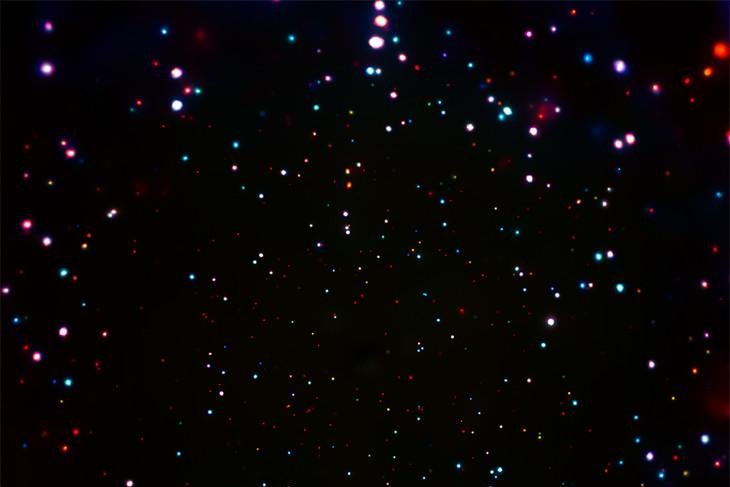A portion of the newest image from the Chandra X-Ray Observatory, which features the highest concentration of supermassive black holes ever seen. Photo by NASA/CXC/Penn State/B. Luo et al.
STATE COLLEGE, Pa., Jan. 5 (UPI) -- NASA's Chandra X-ray Observatory has captured the deepest X-ray image, revealing the highest concentration of supermassive black holes.
"It can be very difficult to detect black holes in the early Universe because they are so far away and they only produce radiation if they're actively pulling in matter," Bin Luo, professor of astronomy and space science at Nanjing University, said in a news release. "But by staring long enough with Chandra, we can find and study large numbers of growing black holes, some of which appear not long after the Big Bang."
The new image has offered astronomers a chance to better understand the early evolution of the first supermassive black holes, which appeared 1 or 2 billion years after the Big Bang. Analysis of the new Chandra data suggests supermassive black holes grow in spurts. Their accumulation is sporadic, not slow and steady.
Additionally, they may begin as "heavy" seeds, not light seeds -- comprising masses of 10,000 to 100,000 times that of the sun at their infancy, not 100 times the mass of the sun.
Chandra's latests survey was conducted with the help of the Hubble Space Telescope. Hubble picked the targets -- 2,000 galaxies located between about 12 billion and 13 billion light-years from Earth -- and Chandra absorbed the X-rays.
The study also revealed X-rays produced by smaller, stellar-mass black holes.
"By detecting X-rays from such distant galaxies, we're learning more about the formation and evolution of stellar-mass and supermassive black holes in the early Universe," said Fabio Vito, a postdoctoral scholar in astronomy and astrophysics at Pennsylvania State University. "We're looking back to times when black holes were in crucial phases of growth, similar to hungry infants and adolescents."
Researchers detailed Chandra's latest exploits in the Astrophysical Journal.















